
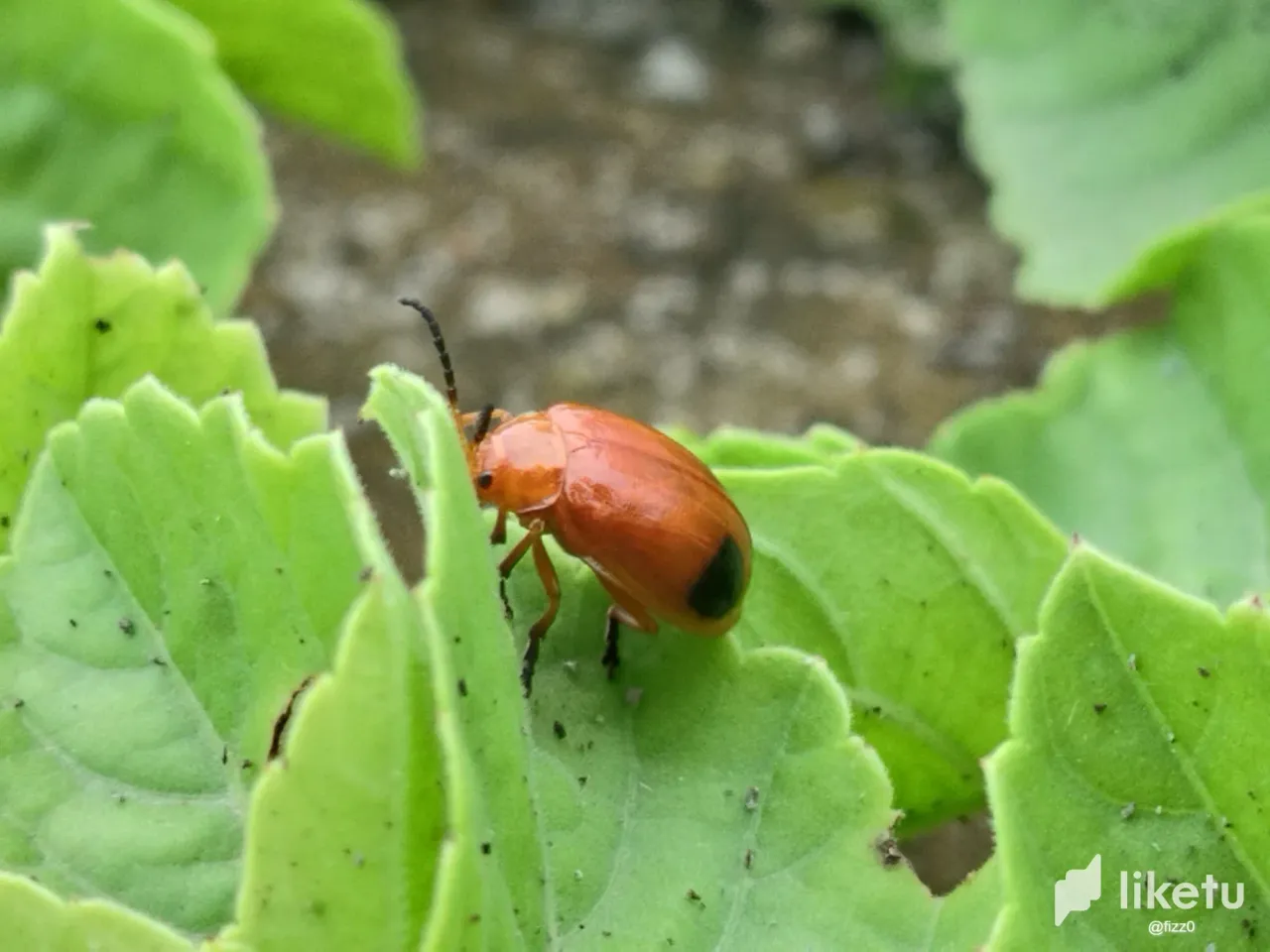
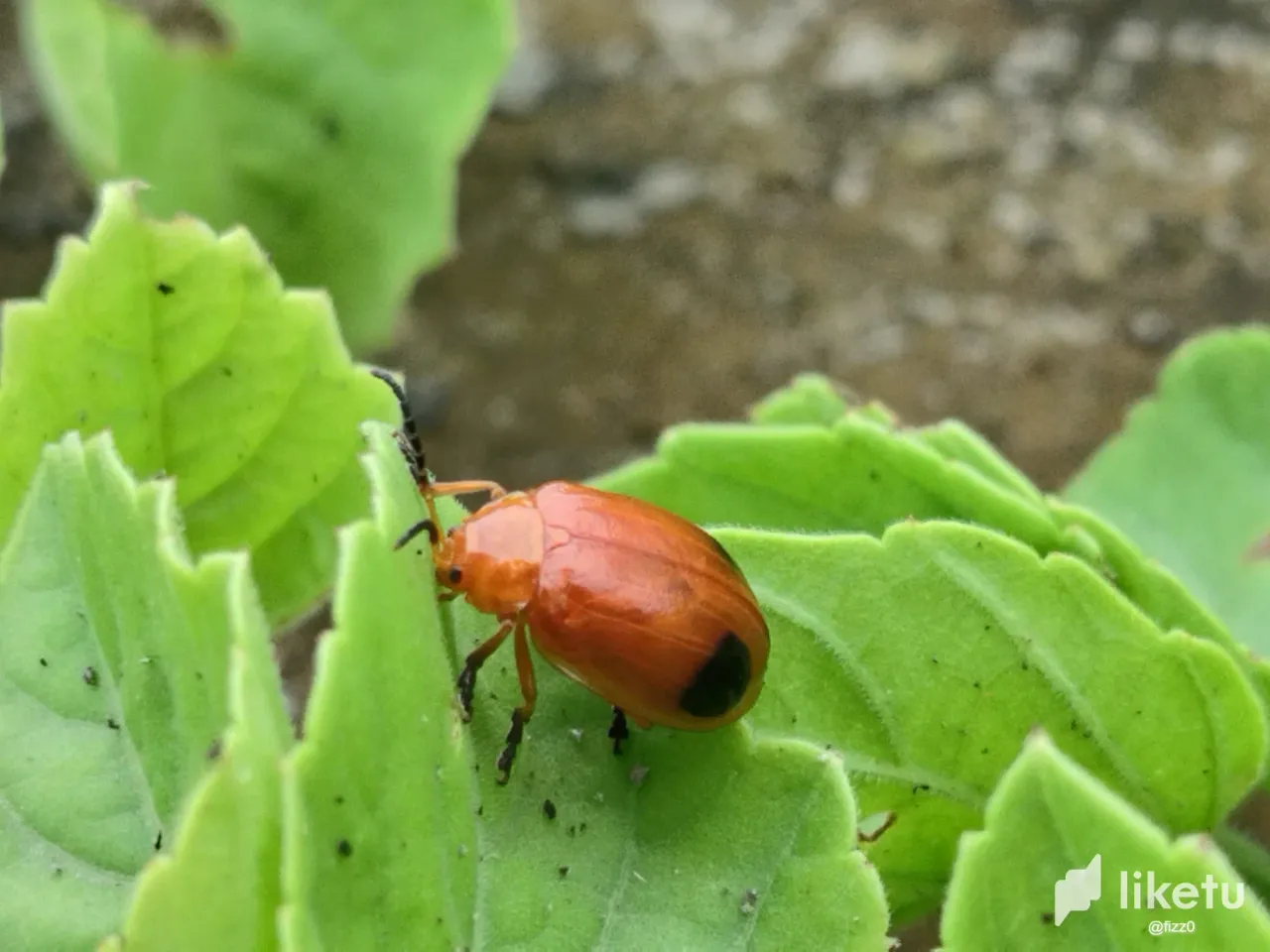
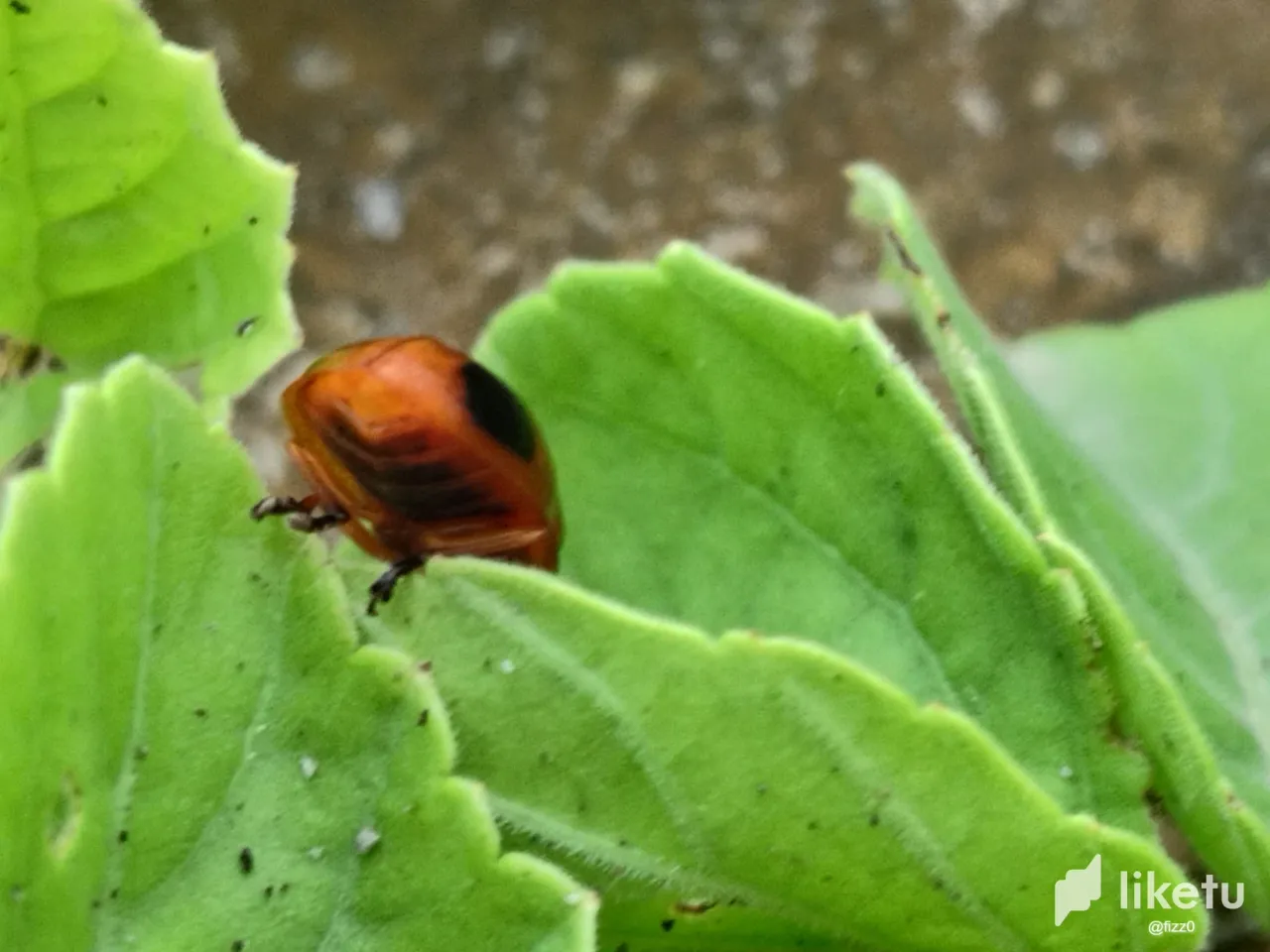
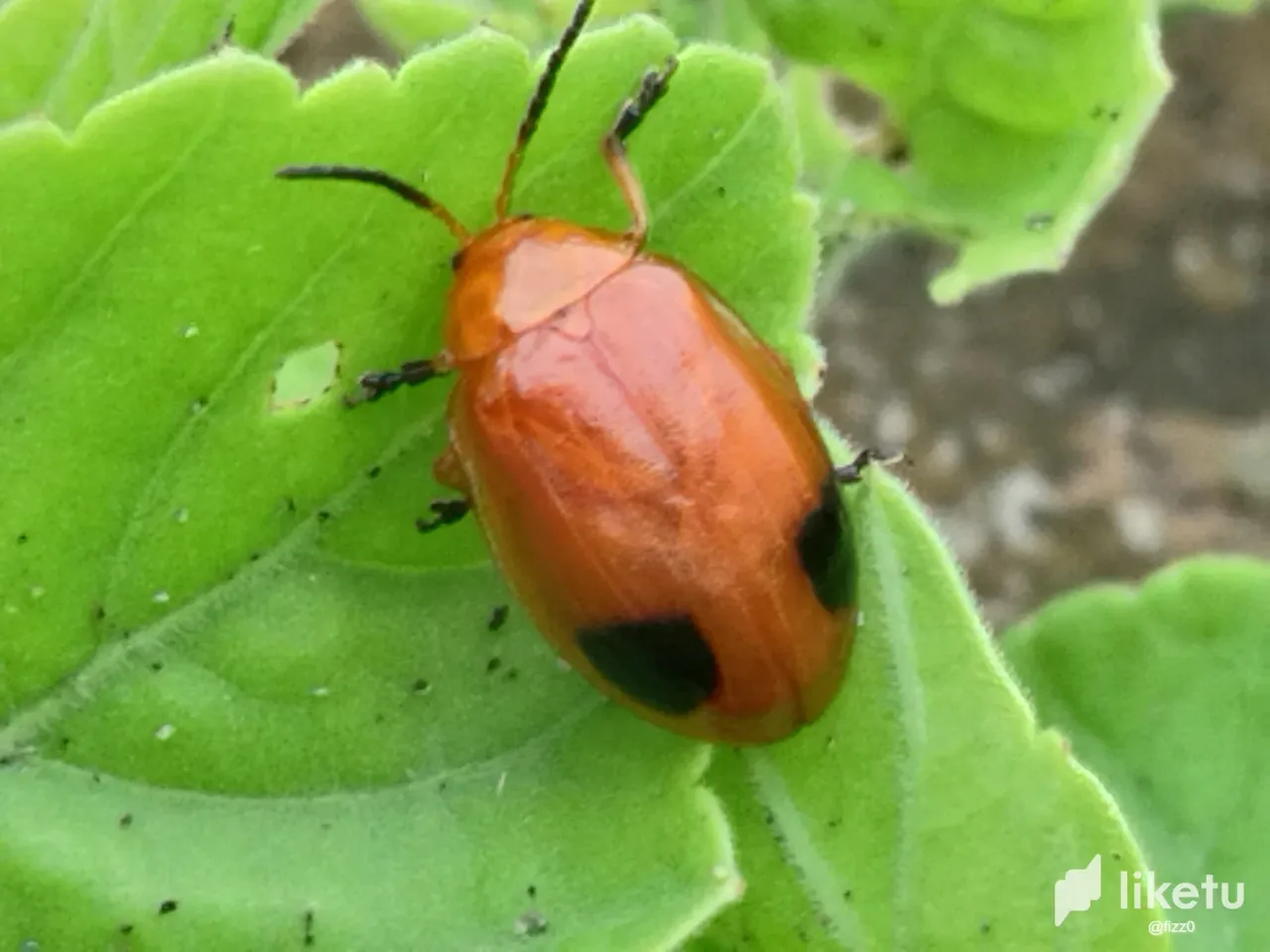
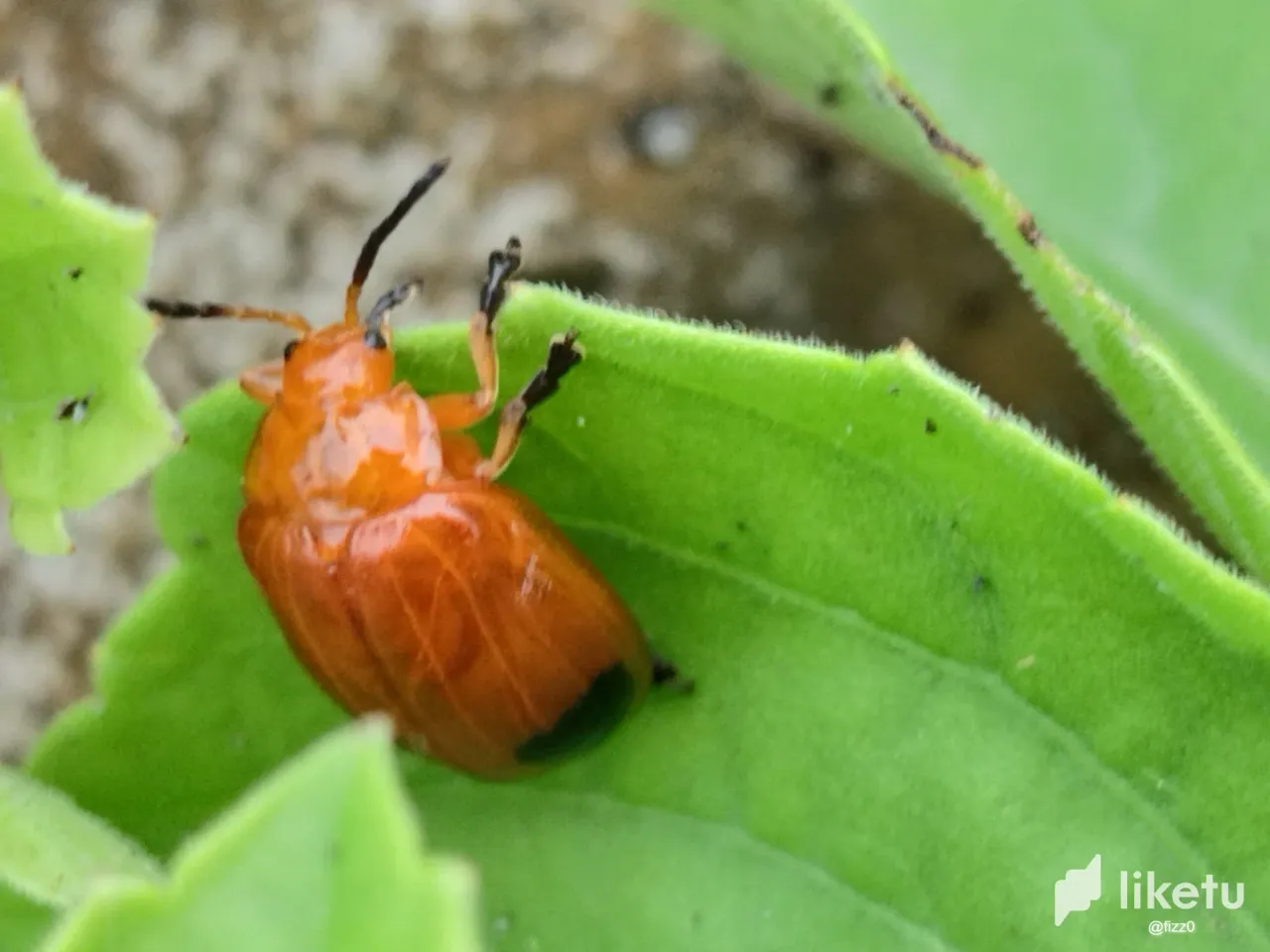

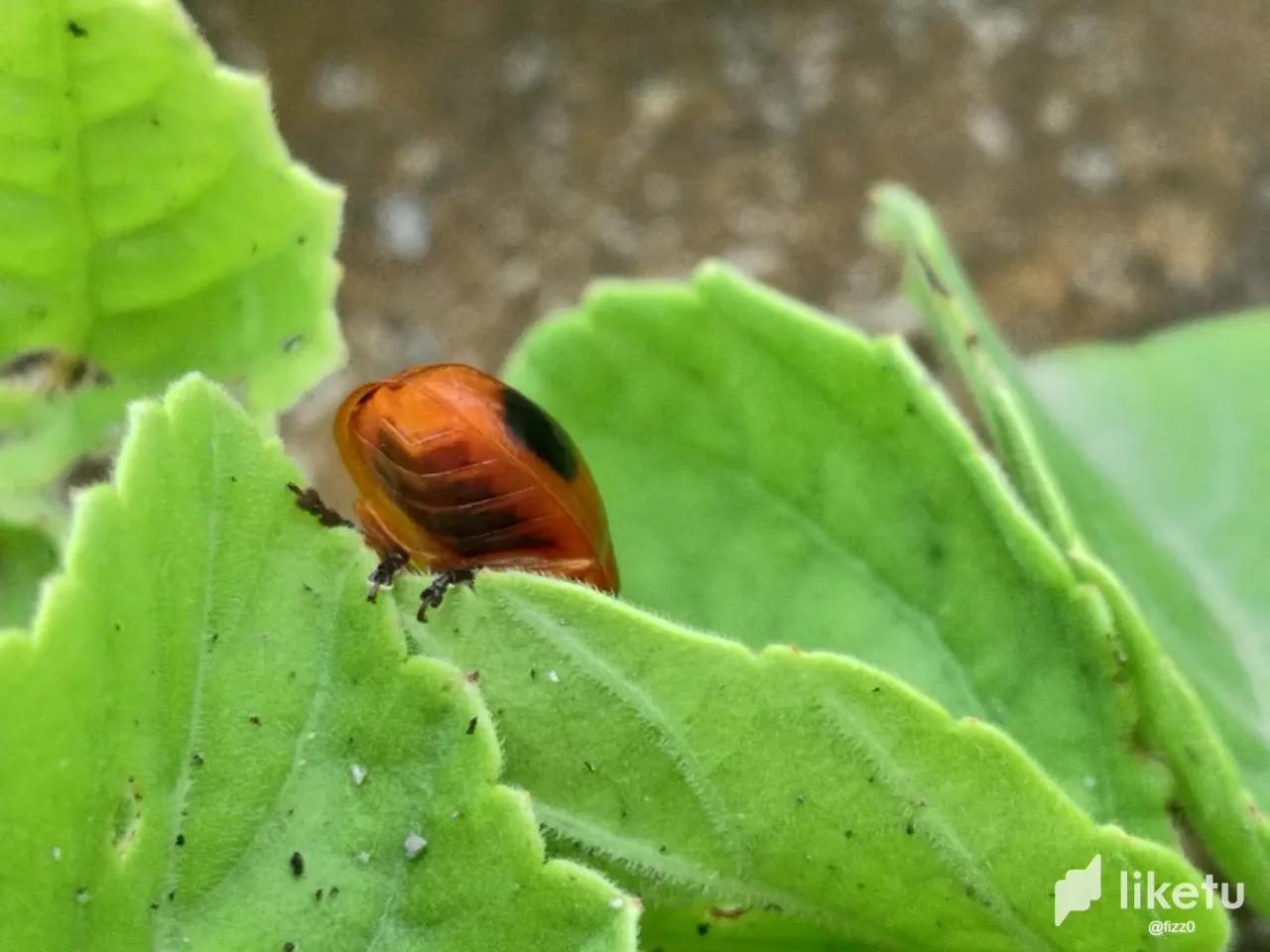

Friends, when I went to the terrace of my house this morning, I saw this insect. By the way, my camera was not so effective as to take a photo of this insect in high definition result, but still I have presented this photo to you so that I can show it properly. When I researched on Google, I came to know that this insect is called Aulacophora foveicollis and it lives life in a very different way. During their life, they also become effigies once. They start life in the month of March. Their size is up to 6 mm long and up to 4 mm wide like this.
The female lays eggs which are 6 to 8 in number. Their eggs are of saffron color and are said to be very beautiful. When these eggs burst, the remaining ones come out which are saffron colored, soft and holding horns like the front. So this is how they come. They mostly like to eat Cucurbita maxima plants and betel leaves. It has been heard that they are ruining the crops in North-West Indian areas. This species is found in Australia, Africa and Asia.
| Photographer | @fizz0 |
|---|---|
| Photography | Aulacophora foveicollis |
| Device Camera | Redmi note 11 pro + |
| Current Location | INDIA |
